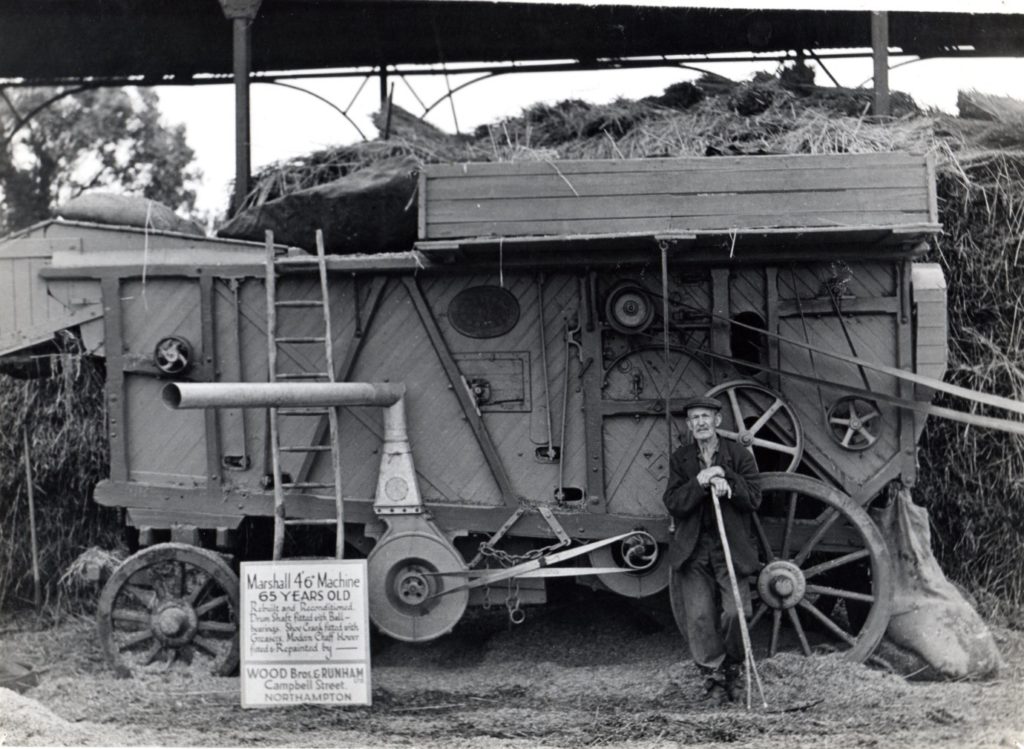Thrashing Machinery

The first record of William Marshall’s inventiveness was that he was awarded a prize of £25 at the Royal Agricultural Society’s show at Norwich for his new portable thrashing machine. in 1849. By 1865 Marshalls now sold three types of Thrashing Machine – Classes A, B and C.
In 1870 Marshalls stated that they had already made & supplied 8,850 thrashing machines. New 4’6” thrashing drums and improved straw elevators were introduced in 1885 and in 1888 Marshalls were the 3rd largest manufacturers of thrashing machines, having produced 10,680. There were 50 variations of thrashing machines, but the most popular was the Class A.
All production of thrashing machines was transferred to Trent Works in 1894 and in 1897 a self-moving prototype thrashing machine was produced, but this experiment was shortly lived. The first all steel thrashing machine was first produced in 1919 aimed at the markets of South America, but it was unpopular with the conservative British market so an improved ‘English’ type SM all steel framed machine was launched in 1922. Sales of thrashing machines had declined from 1,211 in 1913 to 246 in 1926. In 1929 Marshalls took over the manufacture of Clayton and Shuttleworth’s thrashing machine, combine harvester, elevator and chaff cutting business, but in 1932 Marshalls decided that the production of the Clayton combine harvesters and Clayton thrashing machines were to be discontinued, leaving only the Marshall all steel thrashing machine in production. Throughout the war between 1939 and 1945 over 2,000 thrashing machines were built, but after the war sales quickly fell away.